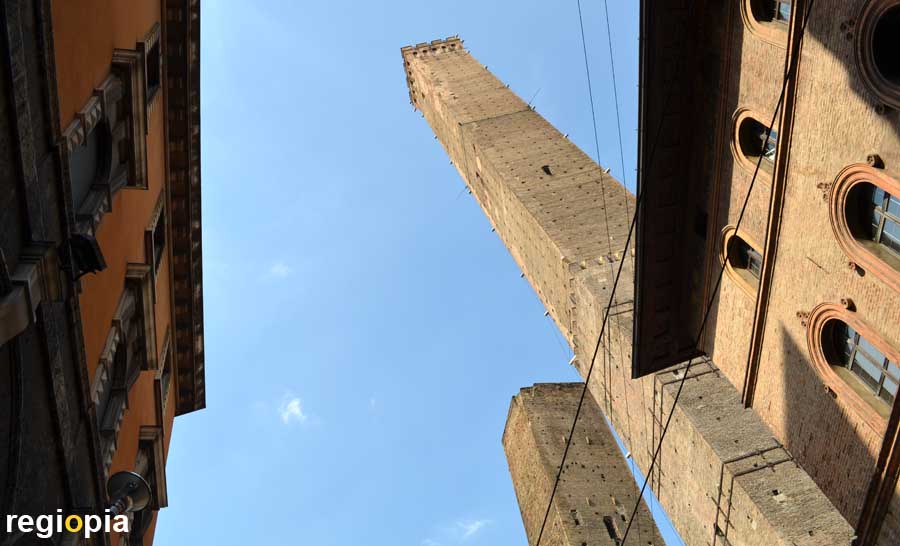
Due Torri
The two towers are the symbol of Bologna and the highlight of the city, because you can climb one one of the two towers. The panorama of the spire is unique. The taller one is the "Torre degli Asinelli". It was built in 1119 and is 97 meters high. The smaller tower is the "Torre Garisenda" it had to be cut because of severe imbalance in the 14th century and is now only 48 m high. Both towers were named after the family that built them.
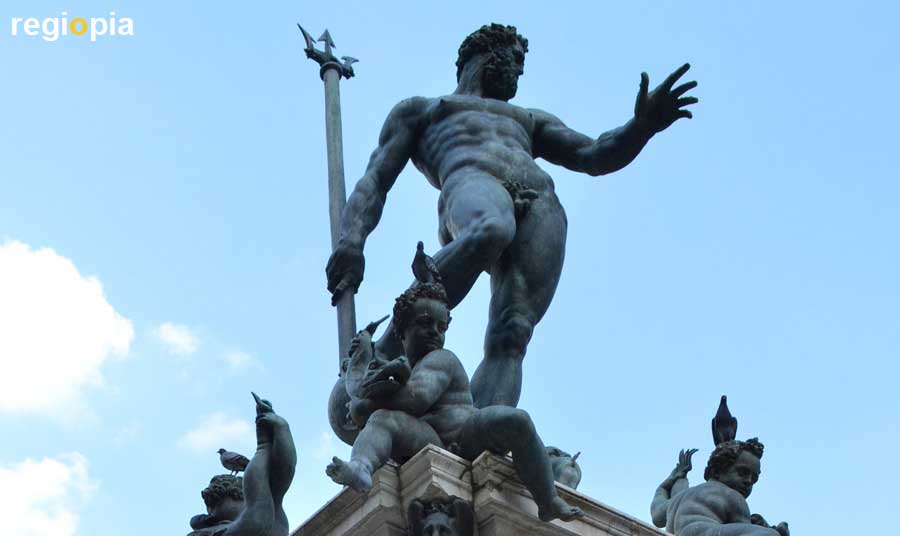
Fontana del Nettuno
The Neptune Fountain "Fontana del Nettuno" was created in 1566 by Giovanni di Bologna. The fountain itself and the figures of sirens and dolphins were designed by Tommaso Laureti. The figures are made of bronze, while the fountain is made of marble. The trident is the symbol of "Neptune", who rules over the waters just like Poseidon. The sports car manufacturer "Maserati" in nearby Modena, uses the trident as it's logo.
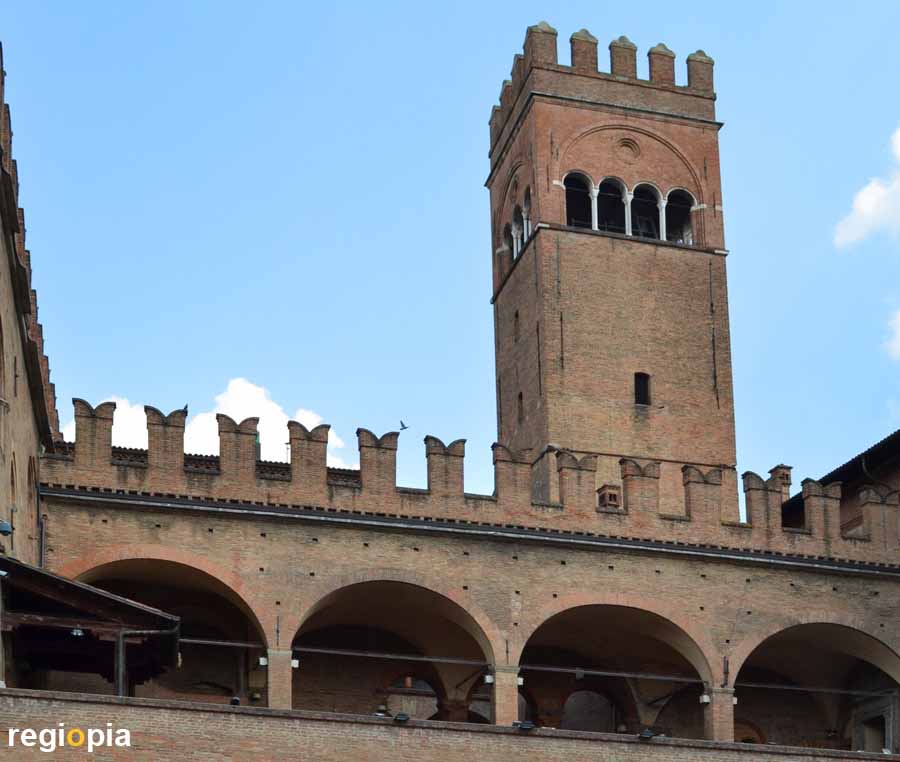
Palazzo del Podesta
The "Palazzo del Podesta" has the most prominent location in Bologna, it is located between the "Piazza Maggiore" and the "Piazza del Nettuno". The palace was built around the year 1200 for the "Podesta". The "Podesta" was the assembly of the city dignitaries or an external administrator who was appointed if the noble citizens could not agree on a representative of their own. The "Palazzo del Podesta" is surpassed by the "Torre dell'Arengo", whose bell was rung to announce a meeting of the citizens. Aristotele Fioravanti designed the facade in Renaissance style in 1453.
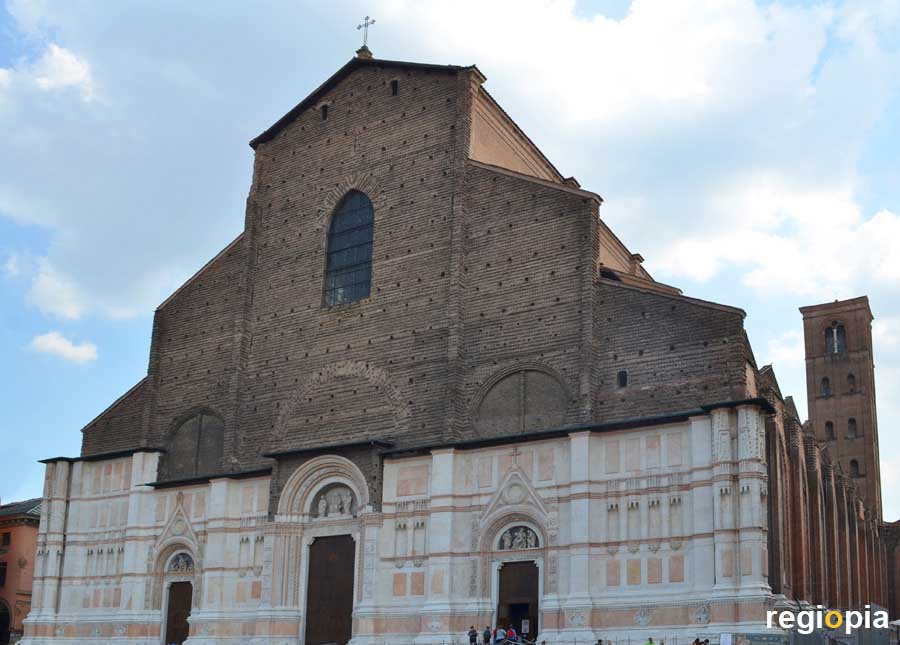
Basilica San Petroni
The "San Petroni" church is dedicated to the patron saint of Bologna, a former bishop of the city. The construction of the church was started in 1390 but the marble facade is still not completed. The Gothic interior is lined with 22 chapels decorated with precious sculptures and paintings.
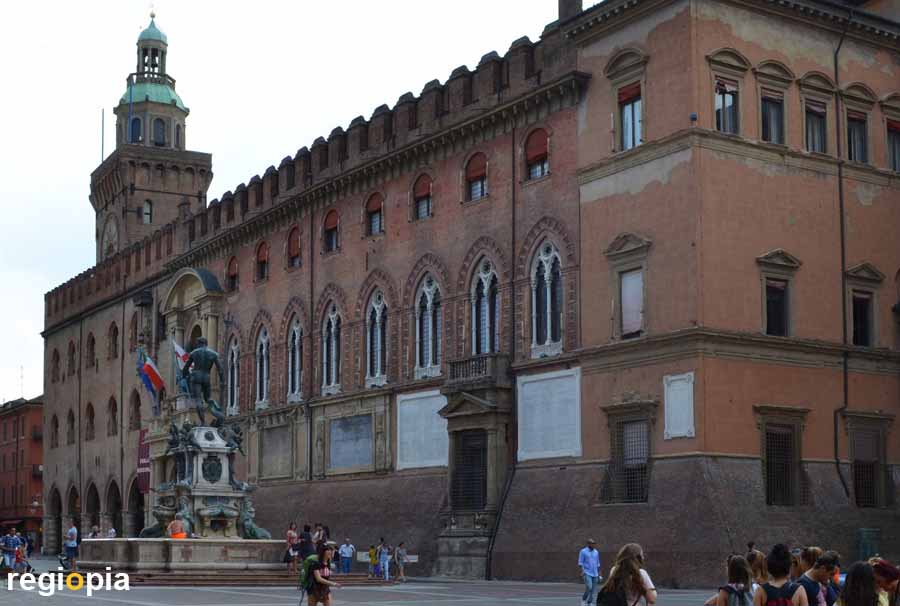
Palazzo Comunale
The "Palazzo Comunale" was the center of the city and consists of three palaces. The oldest palace is the "Palazzo delle Biade" built in the 13th century. The "Palazzo del Senato" was built in the 15th century and the "Palazzo del Cardinale Legato" was built in the 16th century. In the "Palazzo Comunale" you will find the "Museo Morandi", the "Collezioni Comunali d'Arte" and the "Bibliteca-Mediateca".

Palazzo della Mercanzia
The Palazzo della Mercanzia was built between 1382 and 1391 by the architects Lorenzo da Bagnomarino and Antonio di Vincenzo. The gothic building served in the Middle Ages as a commercial tribunal (Tribunale mercantile). The judges read the judgments from the small balcony in the middle of the facade. When the Torre de Bianchi collapsed, the facade of the Loggia della Mercanzia was badly damaged. The facade was restored in 1615. Under Napoleon, the building was converted into a chamber of commerce.
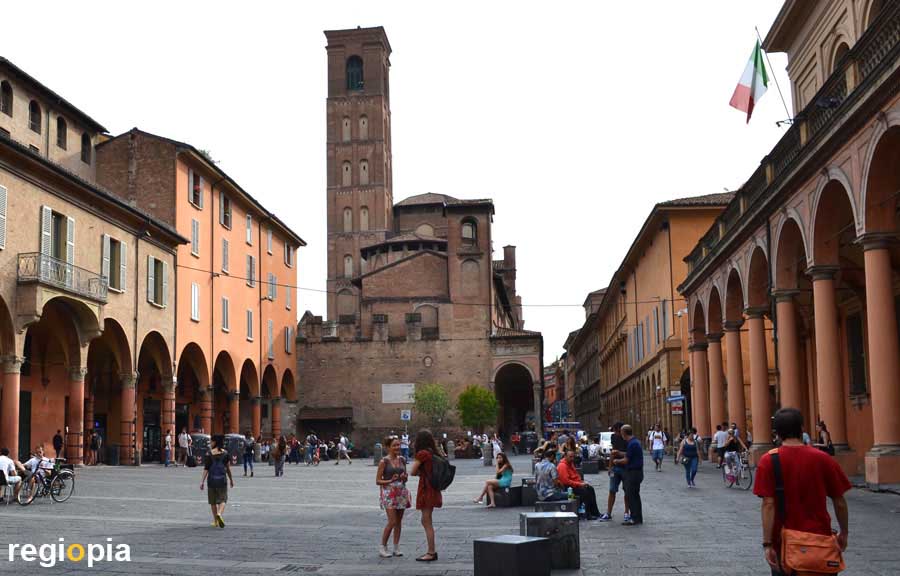
Piazza Giuseppe Verdi
Piazza Giuseppe Verdi marks the entrance to the university district of Bologna. At Piazza Giuseppe Verdi is also the "Teatro Comunale" of Bologna, which was opened in 1663. Towards the city center stands the church of San Giacomo Maggiore, built between 1267 and 1315. The simple-looking church is richly decorated in the interior and shows paintings of the Renaissance. On the Via Zamboni, which runs across the square, there are many palaces in which there are departments of the University. The University of Bologna was founded in 1088, making it the oldest university in Europe. With around 100,000 students, it is the third largest university in Italy.
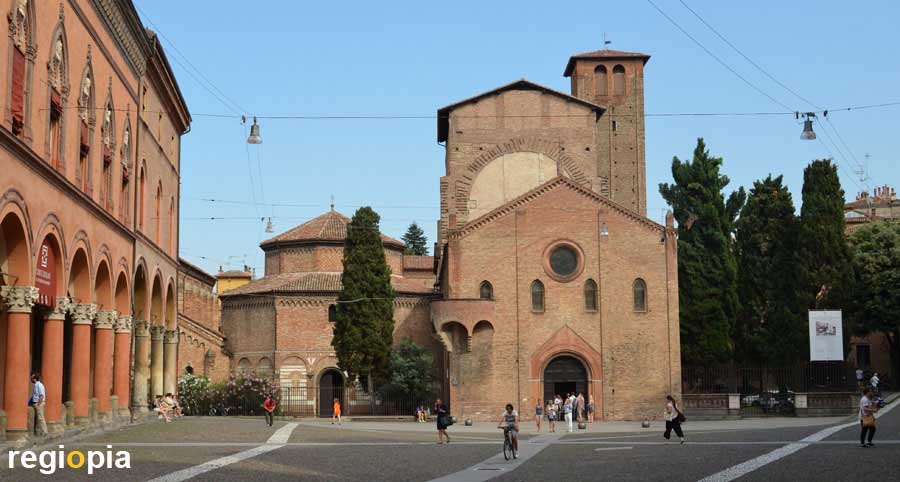
Basilica di Santo Stefano
The Via Santo Stefano opens just a few hundred meters behind the Palazzo della Mercanzia to a beautiful square where the Basilica di Santo Stefano stands. The church looks unspectacular, but hides a remarkable building behind the brick facade. Four churches were built to form a holy complex. Already in 392, the bishop of Milan established a sanctuary for the martyrs Agricola and Vitale from Bologna. Around 450, the Chiesa del Santo Sepolcro was built as replica of the Church of the Holy Sepulcher in Jerusalem. The Basilica of the Benedictines was built in the 10th century. This Chiesa del Crocifisso is the largest church of Santo Stefano. In addition to the round Chiesa del Santo Sepolcro stands the Chiesa dei Santi Vitale e Agricola. Behind the Corte di Pilato courtyard is the small Chiesa della Trinità. There is also a beautiful cloister with double columns upstairs and the Museo della Basilica where a triptych by Simone dei Crocifissi from the 14th century is shown.
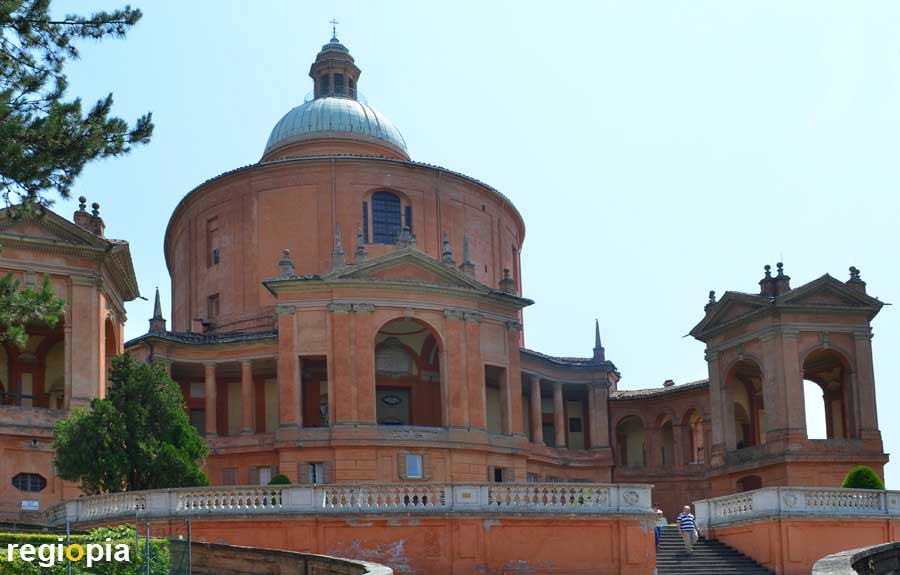
Basilica di San Luca
The special thing about the pilgrimage church San Luca is the approximately 3 kilometer long archway that leads to the church up on the hill "Colle della Guardia". This is the longest arcade in the world, built around 1650. You can walk the 200 meters from the Porta Saragozza to the church in the corridor which is supported by 666 arches. The first church was built here in the 12th century. The church of San Luca became a place of pilgrimage around 1433 because of the Byzantine Madonna icon. Today's Basilica di San Luca was completed in 1757 and designed by Carlo Francesco Dotti on an oval floor plan. The pilgrimage church towers high above Bologna on a mountain with a great view of the Apennine mountain range. For more pictures check out Bologna picture gallery.
Map sights of Bologna
ads
Travel Guide Bologna
Welcome to Bologna
With around 380,000 inhabitants, Bologna is the capital of the "Emilia-Romagna" region. The city emerged from an Etruscan settlement and was a mighty city in the Middle Ages with a skyline of 180 family towers. Bologna is a well-known university city, the city is especially famous for its good (fat) food. Every child knows "Spaghetti Bolognese". Anyone walking through the city will notice the many arcades.
Ads


